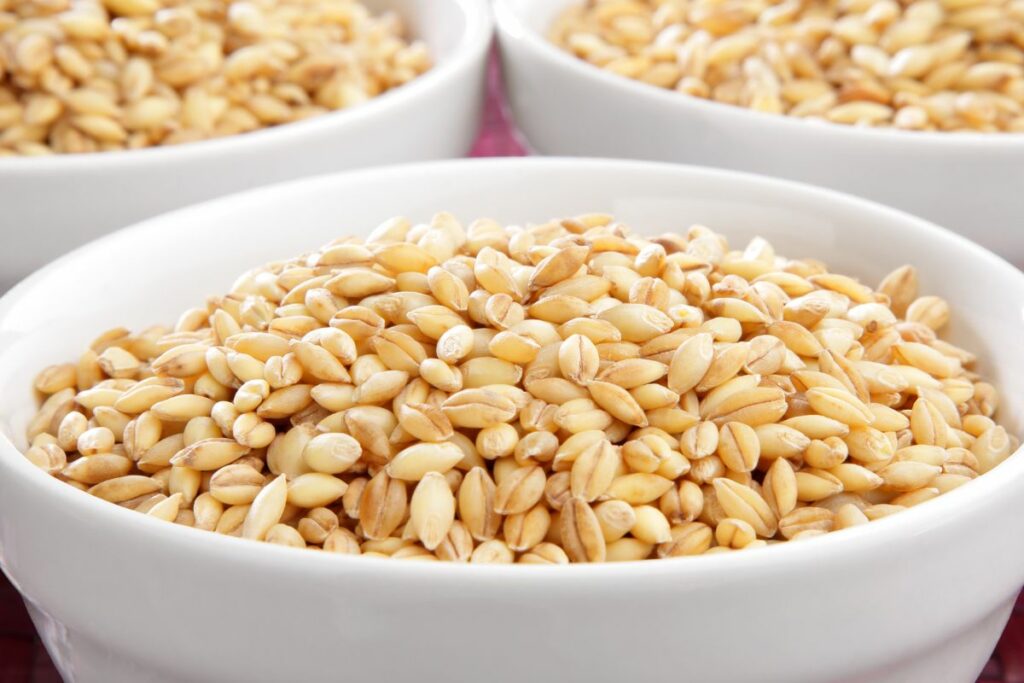Barley is a versatile grain that has been a staple in many cuisines for centuries. It has a nutty flavor, chewy texture, and is packed with nutrients. However, for those who are allergic to gluten or simply want to switch things up in the kitchen, finding a substitute for barley can be a great option.
There are many different grains and seeds that can be used as a substitute for barley. Some of the most popular options include farro, brown rice, oats, quinoa, sorghum, teff, buckwheat, whole wheat millet, brown lentils, and amaranth. Each of these substitutes has its own unique flavor and texture, making them a great choice for a variety of recipes. Whether you are making soup, salad, or a grain bowl, there is a substitute for barley that will work perfectly.
When choosing a substitute for barley, it is important to consider the recipe you are making and the flavor and texture you are looking for. Some substitutes, like quinoa and brown rice, have a milder flavor and can be used in a wider variety of dishes. Others, like teff and buckwheat, have a stronger flavor and are better suited for more savory recipes. No matter what substitute you choose, experimenting with different grains and seeds can be a fun and delicious way to add variety to your diet.
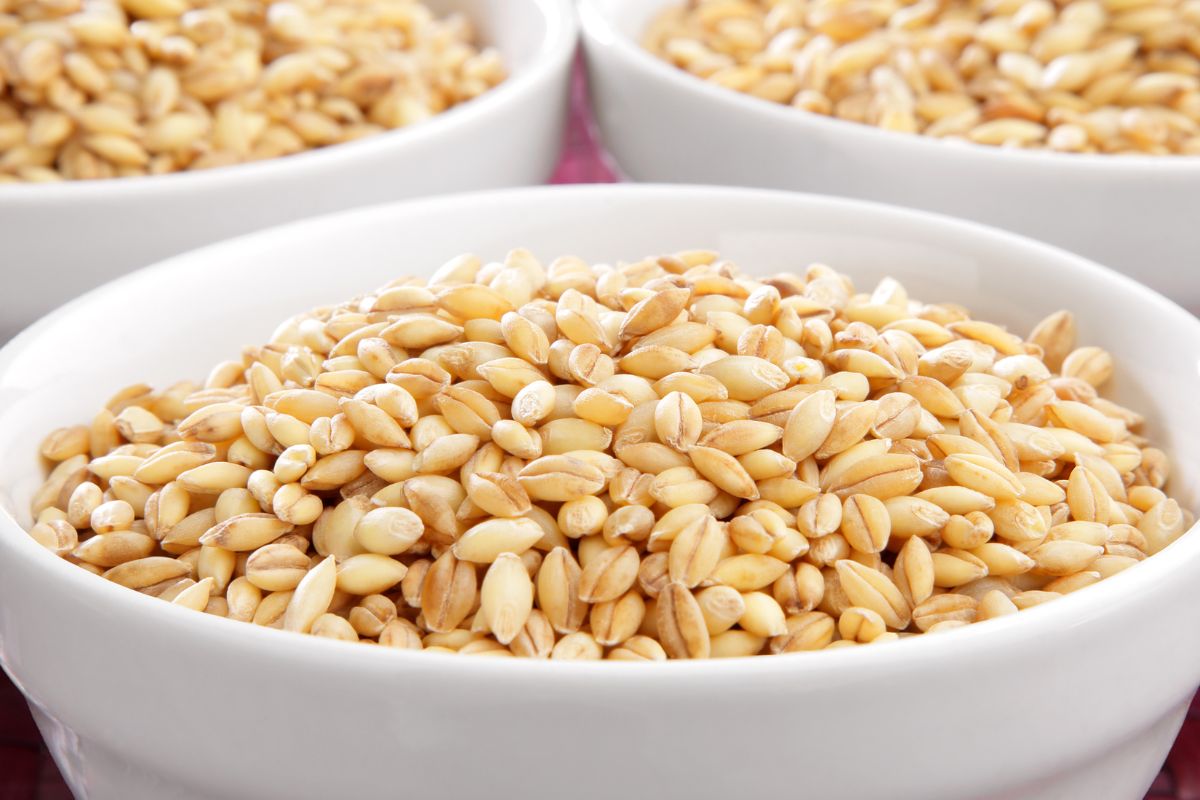
Contents
- 1 Understanding Barley
- 2 Reasons for Substituting Barley
- 3 Quinoa as a Substitute for Barley
- 4 Brown Rice as a Barley Substitute
- 5 Buckwheat as a Barley Alternative
- 6 Oats as a Substitute
- 7 Other Notable Substitutes
- 8 Substituting Barley in Different Dishes
- 9 Health Benefits of Barley Substitutes
- 10 Considerations When Choosing a Substitute
Understanding Barley
Barley is a versatile and nutritious grain that has been cultivated for thousands of years. It is a member of the grass family and is closely related to wheat, rye, and oats. Barley is often used in soups, stews, and salads, and is a key ingredient in beer and whiskey.
There are several different types of barley, including hulled barley, pearled barley, and quick-cooking barley. Hulled barley is the least processed and retains its bran and germ, making it the most nutritious option. Pearled barley has had its outer husk removed, which removes some of the fiber and nutrients. Quick-cooking barley has been pre-cooked and dried, making it a convenient option for busy cooks.
Barley is a good source of fiber, protein, and several important vitamins and minerals. A 1/2 cup serving of cooked barley contains approximately:
- 97 calories
- 3 grams of fiber
- 2.5 grams of protein
- 0.2 grams of fat
- 22% of the recommended daily intake of manganese
- 14% of the recommended daily intake of selenium
- 12% of the recommended daily intake of copper
Barley is also a good source of antioxidants, which can help protect against chronic diseases such as heart disease, cancer, and diabetes.
Overall, barley is a nutritious and delicious grain that can be used in a variety of recipes. However, for those who are gluten-sensitive or allergic to gluten, barley should be avoided as it contains gluten.
Reasons for Substituting Barley
There are many reasons why someone might need to substitute barley in a recipe. Here are a few of the most common:
Allergies
Barley contains gluten, which means that people with gluten allergies or sensitivities cannot consume it. In this case, it’s important to find a substitute that is gluten-free. Some great gluten-free substitutes for barley include:
- Quinoa
- Buckwheat
- Millet
These grains have a similar texture and taste to barley, but do not contain gluten.

Celiac Disease
People with celiac disease cannot consume gluten, which means that they need to find a substitute for barley that is completely gluten-free. Some great gluten-free substitutes for barley include:
- Rice
- Corn
- Sorghum
These grains are completely gluten-free and can be used as a substitute for barley in many recipes.
Gluten Sensitivities
Some people are sensitive to gluten, even if they do not have celiac disease. In this case, it’s important to find a substitute that is low in gluten or gluten-free. Some great low-gluten or gluten-free substitutes for barley include:
- Farro
- Spelt
- Oats (make sure they are certified gluten-free)
These grains are low in gluten or gluten-free and can be used as a substitute for barley in many recipes.
Overall, there are many reasons why someone might need to substitute barley in a recipe. Whether it’s due to allergies, celiac disease, or gluten sensitivities, there are plenty of great substitutes available that can be used in place of barley.
Quinoa as a Substitute for Barley
Quinoa is a nutritious and versatile grain that can be used as a substitute for barley in many recipes. It is a complete protein, meaning it contains all nine essential amino acids, making it an excellent choice for vegetarians and vegans.
In addition to protein, quinoa is also high in fiber, which can help improve digestion and promote feelings of fullness. It is also a good source of minerals like magnesium, which is important for bone health, and phosphorus, which is essential for energy production.

When using quinoa as a substitute for barley, it is important to keep in mind that it has a slightly nuttier flavor and a softer texture. This makes it a great option for salads and lighter dishes, but may not work as well in heartier soups and stews.
To use quinoa as a substitute for barley, simply cook it according to the package instructions and use it in place of barley in your favorite recipes. It can be used in everything from risottos to grain bowls to breakfast porridges.
Overall, quinoa is a nutritious and delicious substitute for barley that can add a boost of protein, fiber, and minerals to any dish.
Brown Rice as a Barley Substitute
Brown rice is a nutritious and fiber-rich grain that makes an excellent substitute for barley. Both grains are considered whole grains and are high in fiber, which is important for digestive health. Brown rice is also a good source of vitamins and minerals, such as magnesium and selenium. It has a similar texture and nutty flavor to barley, making it a good replacement in recipes like soups, stews, and side dishes.
When using brown rice as a barley substitute, it’s important to keep in mind that brown rice takes longer to cook than barley. To make brown rice, cook up 2 parts water to 1 part rice. It takes about 45 minutes to cook, but the result is a delicious and nutritious grain that can be used in a variety of recipes.
One great way to use brown rice as a barley substitute is in a pilaf. Simply sauté some onions and garlic in a pan, add the brown rice and some vegetable broth, and let it simmer until the rice is tender. You can also add some chopped vegetables like carrots, celery, and bell peppers to the mix for added flavor and nutrition.
Overall, brown rice is a great substitute for barley in a variety of recipes. It’s nutritious, delicious, and easy to cook. Plus, it’s a staple food that can be found in most grocery stores, making it an accessible option for anyone looking to replace barley in their diet.
Buckwheat as a Barley Alternative
Buckwheat is a gluten-free grain that has a nutty flavor, making it a perfect substitute for barley in recipes. It has a high content of fiber and protein, making it a healthy alternative. Buckwheat flour and buckwheat groats are two popular forms of buckwheat that are used in cooking.
Buckwheat groats are the hulled seeds of the buckwheat plant. They can be cooked and used in place of barley in soups, stews, and salads. Buckwheat flour, on the other hand, can be used as a substitute for barley flour in recipes such as bread, pancakes, and muffins.

One of the benefits of using buckwheat as a substitute for barley is that it is gluten-free. This makes it an excellent option for people with gluten intolerance or celiac disease. Buckwheat is also high in fiber, which can help promote digestive health and keep you feeling full for longer periods.
In addition to its fiber content, buckwheat is also a good source of protein. This makes it an ideal ingredient for vegetarians and vegans who are looking for plant-based sources of protein. Buckwheat is also rich in essential minerals such as magnesium, phosphorus, and manganese.
Overall, buckwheat is a versatile and healthy alternative to barley. It can be used in a variety of recipes and is a great option for people with gluten intolerance or celiac disease.
Oats as a Substitute
Oats are a nutritious and versatile cereal grain that can be used as a substitute for barley in many recipes. They are a good source of fiber and protein, making them a healthy addition to any diet. Oats are also naturally gluten-free, making them an excellent option for those with gluten sensitivities.
One of the most popular ways to use oats as a substitute for barley is in porridge. Oatmeal porridge is a warm and comforting breakfast dish that is easy to prepare and can be customized to suit individual tastes. Simply cook oats in milk or water, and add your favorite toppings, such as fruit, nuts, or honey.
Oats can also be used in savory dishes, such as soups and stews, in place of barley. They add a hearty texture and nutty flavor to these dishes, and are a great way to boost the fiber and protein content of your meal.
When using oats as a substitute for barley, it is important to keep in mind that they have a softer texture and milder flavor than barley. This means that they may not be the best choice for dishes that require a chewy texture or strong flavor, such as risotto or pilaf.
In summary, oats are a healthy and versatile substitute for barley that can be used in a variety of dishes. They are a great source of fiber and protein, and are naturally gluten-free, making them a good option for those with dietary restrictions. Whether you are making porridge, soup, or stew, oats can add a nutritious and delicious element to your meal.
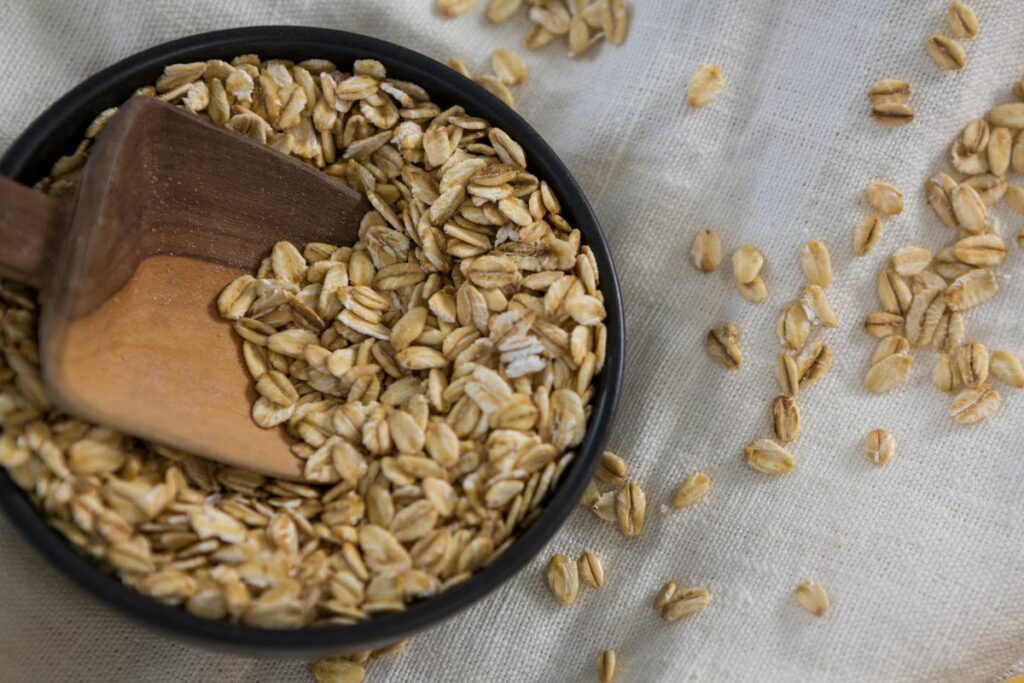
Other Notable Substitutes
In addition to the substitutes mentioned above, there are several other notable substitutes for barley that are worth considering.
Wheat Berries
Wheat berries are a type of whole wheat kernel that can be used as a substitute for barley in recipes such as soups and salads. They have a nutty flavor and a chewy texture, similar to barley. They are also high in protein, fiber, and other nutrients, making them a healthy and nutritious choice.
Freekeh
Freekeh is a type of roasted green wheat that is commonly used in Middle Eastern cuisine. It has a smoky flavor and a chewy texture, similar to barley. Freekeh is also high in protein, fiber, and other nutrients, making it a healthy and nutritious choice.
Durum Wheat
Durum wheat is a type of wheat that is commonly used to make pasta. It has a nutty flavor and a chewy texture, similar to barley. Durum wheat is also high in protein, fiber, and other nutrients, making it a healthy and nutritious choice.
Couscous
Couscous is a type of pasta made from semolina flour. It has a mild flavor and a fluffy texture, similar to barley. Couscous is also quick and easy to prepare, making it a convenient substitute for barley in recipes such as salads and side dishes.
Millet
Millet is a small, round grain that is commonly used in African and Asian cuisine. It has a mild flavor and a fluffy texture, similar to barley. Millet is also high in protein, fiber, and other nutrients, making it a healthy and nutritious choice.
Sorghum
Sorghum is a type of grain that is commonly used in African and Asian cuisine. It has a mild flavor and a chewy texture, similar to barley. Sorghum is also high in protein, fiber, and other nutrients, making it a healthy and nutritious choice.

Amaranth
Amaranth is a type of grain that is commonly used in Mexican and South American cuisine. It has a nutty flavor and a chewy texture, similar to barley. Amaranth is also high in protein, fiber, and other nutrients, making it a healthy and nutritious choice.
Teff
Teff is a type of grain that is commonly used in Ethiopian cuisine. It has a nutty flavor and a chewy texture, similar to barley. Teff is also high in protein, fiber, and other nutrients, making it a healthy and nutritious choice.
Substituting Barley in Different Dishes
Barley is a versatile grain that is commonly used in soups, stews, salads, pilafs, and even beer. However, if you don’t have barley or cannot consume it due to dietary restrictions, there are several substitutes that you can use instead.
Soups and Stews
When substituting barley in soups and stews, you can use wheat berries, farro, or quinoa. Wheat berries have a similar texture and nutty flavor to barley, while farro has a chewy texture and nutty taste. Quinoa is a gluten-free option that can be used in place of barley in vegetable soups.
Salads
If you’re making a salad that calls for barley, you can use bulgur, couscous, or quinoa instead. Bulgur has a similar texture to barley and is commonly used in Middle Eastern dishes. Couscous is a type of pasta that can be used in place of barley in cold salads. Quinoa is a versatile grain that can be used in a variety of salads, including Greek and Mediterranean salads.
Pilafs
When making a pilaf, you can use rice, quinoa, or farro instead of barley. Rice has a similar texture to barley and is commonly used in pilafs. Quinoa is a gluten-free option that can be used in place of barley in vegetable pilafs. Farro has a chewy texture and nutty taste that makes it an excellent substitute for barley in pilafs.

Baking
If you’re making baked goods that call for barley flour, you can use wheat flour, spelt flour, or rye flour instead. Wheat flour is a common substitute for barley flour and is readily available in most grocery stores. Spelt flour is a type of wheat flour that has a nutty flavor and can be used in place of barley flour in bread and muffin recipes. Rye flour has a slightly sour taste and can be used in place of barley flour in bread recipes.
Beer
If you’re making beer and don’t have barley, you can use wheat, rye, or oats instead. Wheat beer is a popular style of beer that is made with a high percentage of wheat malt. Rye beer is a type of beer that is made with a high percentage of rye malt. Oatmeal stout is a type of beer that is made with a high percentage of oats and has a smooth, creamy texture.
Overall, there are several substitutes for barley that you can use in a variety of dishes. When choosing a substitute, consider the flavor, texture, and cooking time to ensure that it will work well in your recipe.
Health Benefits of Barley Substitutes
Barley substitutes offer a range of health benefits that make them a great addition to any diet. Here are some of the key benefits:
Low Glycemic Index
Many barley substitutes have a low glycemic index, which means they don’t cause a rapid spike in blood sugar levels. This is particularly important for people with type 2 diabetes, as it can help them manage their blood sugar levels more effectively.
Cholesterol-Lowering Properties
Several barley substitutes, such as oats and quinoa, are known to have cholesterol-lowering properties. This is because they contain soluble fiber, which binds to cholesterol in the digestive tract and helps to remove it from the body.
Rich in Antioxidants
Barley substitutes like quinoa and farro are rich in antioxidants, which can help to protect the body against damage from free radicals. Antioxidants have also been linked to a reduced risk of chronic diseases such as heart disease and cancer.
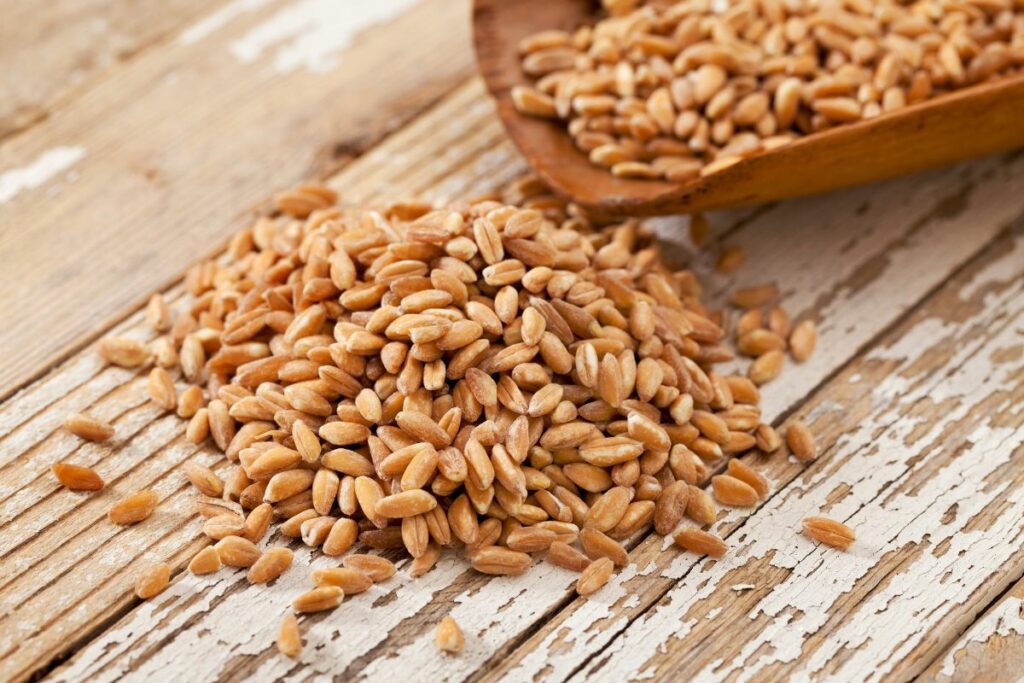
High in Vitamins and Minerals
Many barley substitutes are high in vitamins and minerals, making them a great addition to any diet. For example, quinoa is a good source of calcium, potassium, and B vitamins, while farro is rich in vitamin B6.
Good for Bone Health
Some barley substitutes, such as quinoa and amaranth, are good sources of calcium, which is important for maintaining strong bones and teeth.
Overall, incorporating barley substitutes into your diet can have a range of health benefits. They are a great way to add variety to your meals while also providing important nutrients and antioxidants.
Considerations When Choosing a Substitute
When looking for a substitute for barley, there are several factors to consider to ensure that the substitute will work well in your recipe. Here are some of the things to keep in mind:
Taste and Texture
Barley has a nutty flavor and a chewy texture, so when choosing a substitute, it’s essential to find something that has similar characteristics. Some good options include wheat berries, farro, and spelt, which have a similar texture and flavor profile to barley. However, keep in mind that some substitutes may have a slightly different taste or texture, so it’s a good idea to do a small test batch before using them in a larger recipe.
Cooking Time
Another important consideration when choosing a substitute for barley is the cooking time. Barley takes about 45-60 minutes to cook, depending on the type, so if you’re looking for a quicker alternative, you may want to consider using a grain that cooks faster, such as quinoa or bulgur. On the other hand, if you have more time, you can try using a grain that takes longer to cook, such as wild rice or farro.
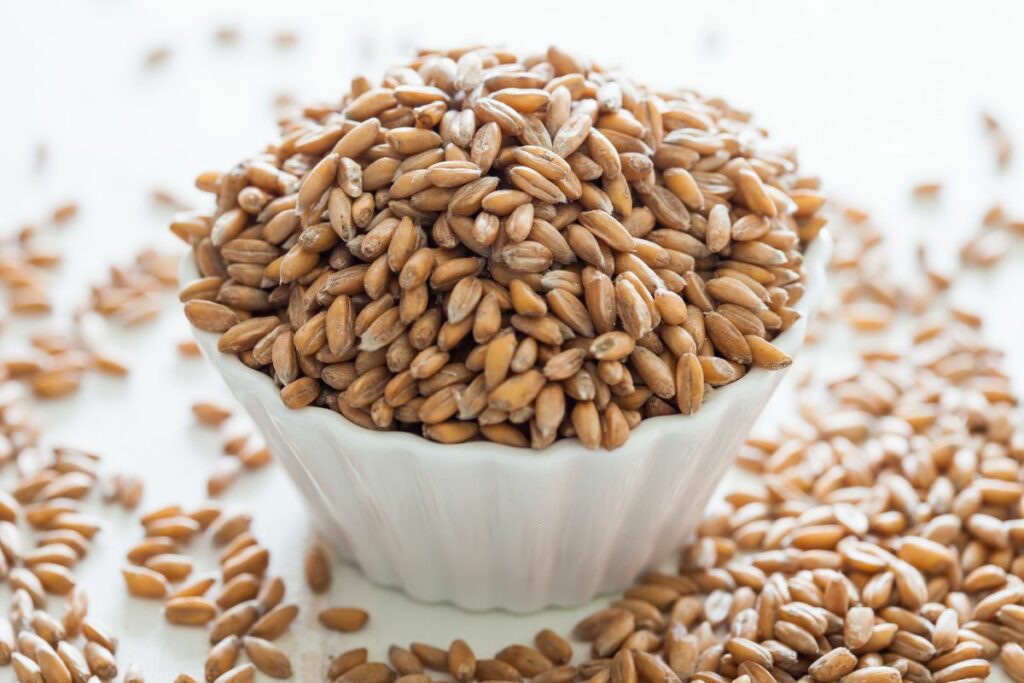
Shelf Life
If you’re planning to store your substitute for barley for a while, it’s important to consider the shelf life of the grain. Some grains, such as quinoa and bulgur, have a longer shelf life than others, such as farro and spelt. Keep in mind that storing grains in an airtight container in a cool, dry place can help extend their shelf life.
Gluten-Free Barley Alternatives
If you’re looking for a gluten-free alternative to barley, there are several options to choose from. Some good substitutes include quinoa, millet, and amaranth, which are all gluten-free grains that have a similar texture and flavor to barley. Keep in mind that some substitutes may require a slightly different cooking method, so be sure to read the instructions carefully before using them in your recipe.
Overall, when choosing a substitute for barley, it’s important to consider factors such as taste, texture, cooking time, and shelf life to ensure that the substitute will work well in your recipe. With so many options available, you’re sure to find a substitute that will suit your needs and preferences.
